Dichloroacetonitrile
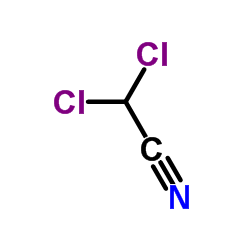
Dichloroacetonitrile structure
|
Common Name | Dichloroacetonitrile | ||
|---|---|---|---|---|
| CAS Number | 3018-12-0 | Molecular Weight | 109.942 | |
| Density | 1.4±0.1 g/cm3 | Boiling Point | 112.5±0.0 °C at 760 mmHg | |
| Molecular Formula | C2HCl2N | Melting Point | N/A | |
| MSDS | Chinese USA | Flash Point | 35.6±0.0 °C | |
| Symbol |



GHS02, GHS05, GHS07 |
Signal Word | Danger | |
| Name | 2,2-dichloroacetonitrile |
|---|---|
| Synonym | More Synonyms |
| Density | 1.4±0.1 g/cm3 |
|---|---|
| Boiling Point | 112.5±0.0 °C at 760 mmHg |
| Molecular Formula | C2HCl2N |
| Molecular Weight | 109.942 |
| Flash Point | 35.6±0.0 °C |
| Exact Mass | 108.948601 |
| PSA | 23.79000 |
| LogP | 1.07 |
| Vapour Pressure | 21.7±0.2 mmHg at 25°C |
| Index of Refraction | 1.448 |
| InChIKey | STZZWJCGRKXEFF-UHFFFAOYSA-N |
| SMILES | N#CC(Cl)Cl |
| Stability | Stable. Combustible. Incompatible with strong oxidizing agents. |
CHEMICAL IDENTIFICATION
HEALTH HAZARD DATAACUTE TOXICITY DATA
MUTATION DATA
|
| Symbol |



GHS02, GHS05, GHS07 |
|---|---|
| Signal Word | Danger |
| Hazard Statements | H226-H302-H314 |
| Precautionary Statements | P280-P305 + P351 + P338-P310 |
| Personal Protective Equipment | Faceshields;full-face respirator (US);Gloves;Goggles;multi-purpose combination respirator cartridge (US);type ABEK (EN14387) respirator filter |
| Hazard Codes | C:Corrosive; |
| Risk Phrases | R10;R22;R34 |
| Safety Phrases | S26-S36/37/39-S45-S25-S16 |
| RIDADR | UN 2920 8/PG 2 |
| WGK Germany | 3 |
| RTECS | AL8465000 |
| Packaging Group | II |
| Hazard Class | 3 |
| HS Code | 2926909090 |
| Precursor 10 | |
|---|---|
| DownStream 10 | |
| HS Code | 2926909090 |
|---|---|
| Summary | HS:2926909090 other nitrile-function compounds VAT:17.0% Tax rebate rate:9.0% Supervision conditions:none MFN tariff:6.5% General tariff:30.0% |
|
The formation potential of haloacetonitriles in the Dez River water, Iran.
Environ. Technol. 35(17-20) , 2347-55, (2014) The formation potential of haloacetonitriles (HANsFP) from chlorination of raw water of the Dez River in Iran was determined. Samples were collected before treatment at an intake of a water treatment ... |
|
|
Genotoxic activity of five haloacetonitriles: comparative investigations in the single cell gel electrophoresis (comet) assay and the ames-fluctuation test.
Environ. Mol. Mutagen. 36(1) , 52-8, (2000) Halogenated acetonitriles (HANs) are known to be water disinfectant by-products. Their mutagenicity and carcinogenicity have been shown in different test systems in vivo and in vitro. They also have c... |
|
|
Exposure to mutagenic disinfection byproducts leads to increase of antibiotic resistance in Pseudomonas aeruginosa.
Environ. Sci. Technol. 48(14) , 8188-95, (2014) Bacterial antibiotic resistance (BAR) in drinking water has become a global issue because of its risks on the public health. Usually, the antibiotic concentrations in drinking water are too low to sel... |
| Dichlor-acetonitril |
| Acetonitrile,dichloro |
| Acetonitrile, 2,2-dichloro- |
| Dichloroacetonitrile |
| Trichloroacetonitrile |
| MFCD00040886 |
| Dichloromethyl cyanide |
| EINECS 221-159-4 |
| dicloroacetonitrile |
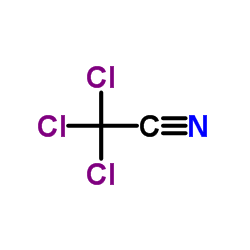 CAS#:545-06-2
CAS#:545-06-2 CAS#:77197-84-3
CAS#:77197-84-3 CAS#:683-72-7
CAS#:683-72-7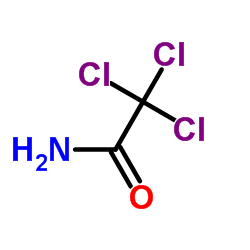 CAS#:594-65-0
CAS#:594-65-0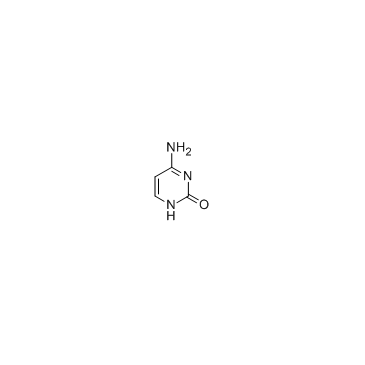 CAS#:71-30-7
CAS#:71-30-7 CAS#:100-46-9
CAS#:100-46-9 CAS#:921-01-7
CAS#:921-01-7 CAS#:66-22-8
CAS#:66-22-8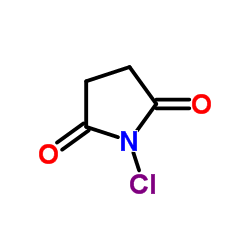 CAS#:128-09-6
CAS#:128-09-6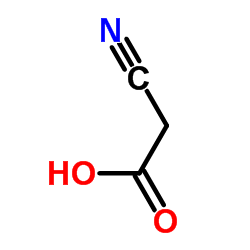 CAS#:372-09-8
CAS#:372-09-8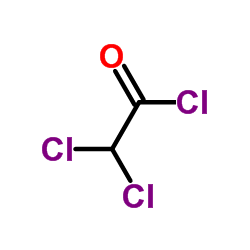 CAS#:79-36-7
CAS#:79-36-7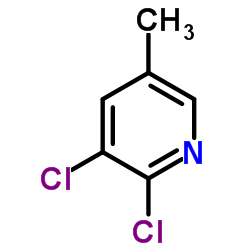 CAS#:59782-90-0
CAS#:59782-90-0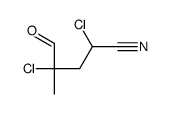 CAS#:90044-00-1
CAS#:90044-00-1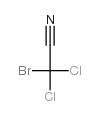 CAS#:60523-73-1
CAS#:60523-73-1![4-Chloro-2-(dichloromethyl)-5,6-dimethylthieno[2,3-d]pyrimidine structure](https://image.chemsrc.com/caspic/027/128276-98-2.png) CAS#:128276-98-2
CAS#:128276-98-2 CAS#:321371-28-2
CAS#:321371-28-2 CAS#:18293-53-3
CAS#:18293-53-3
